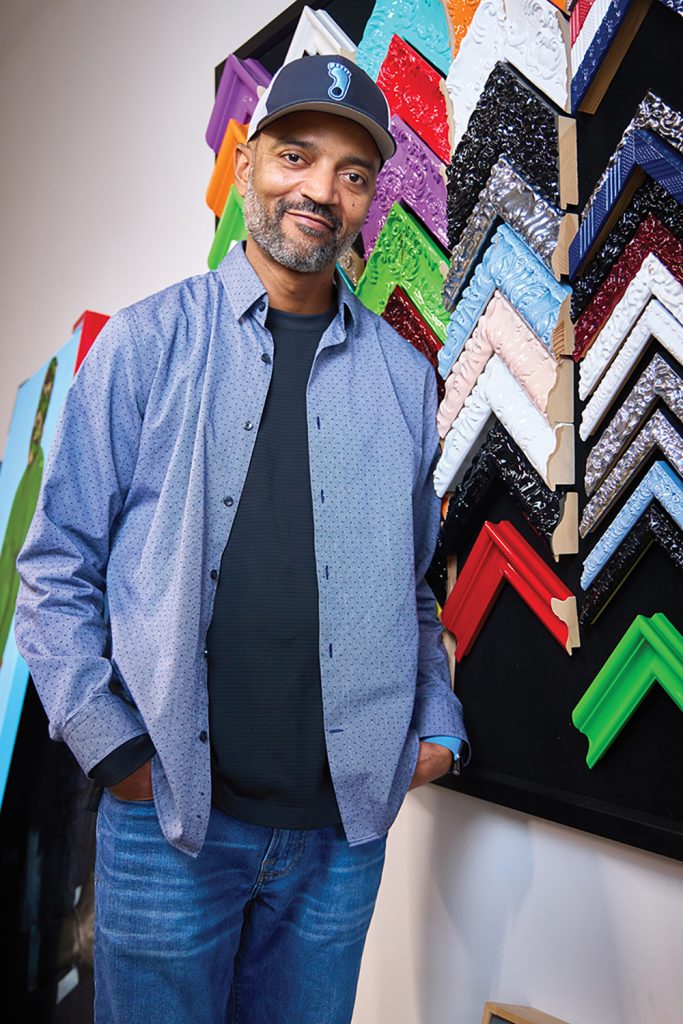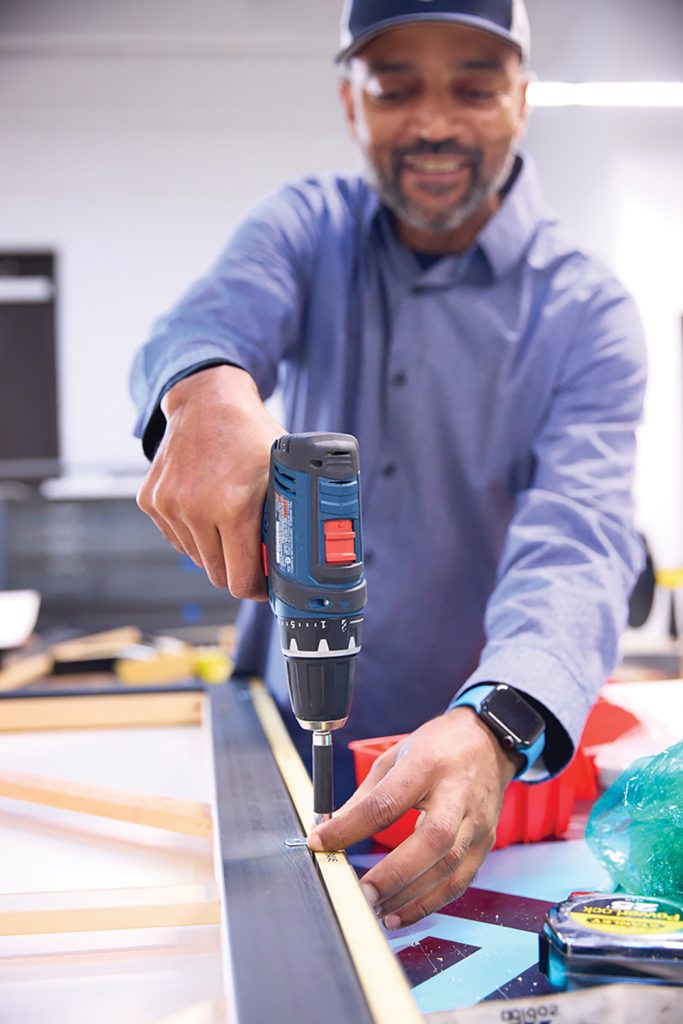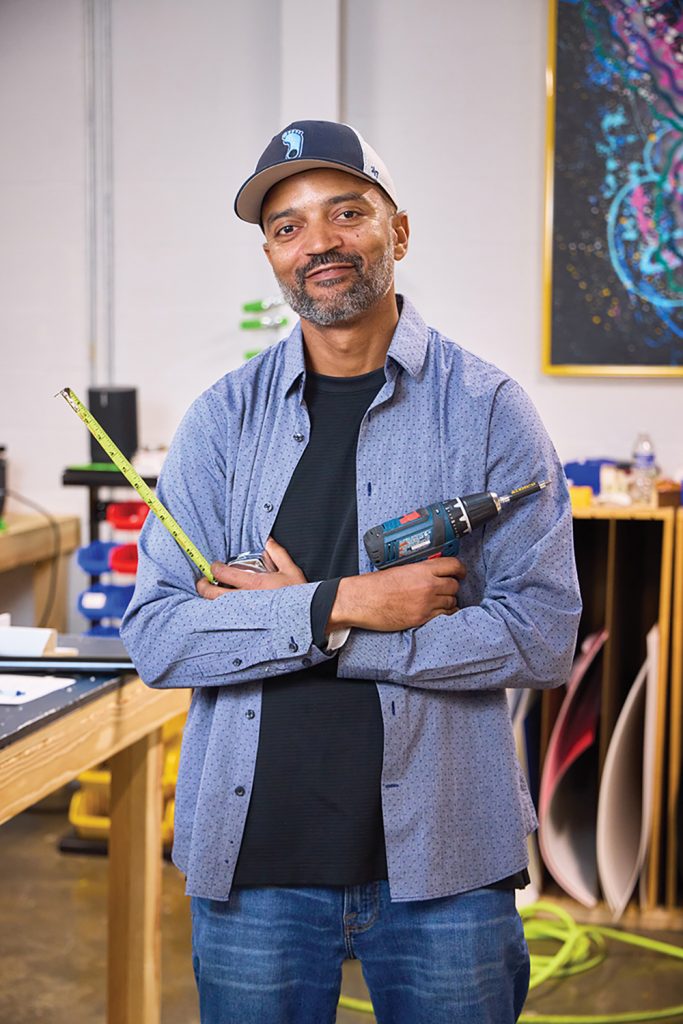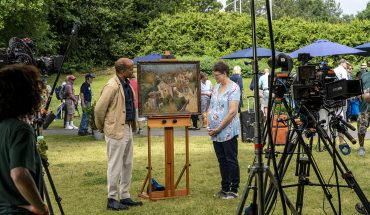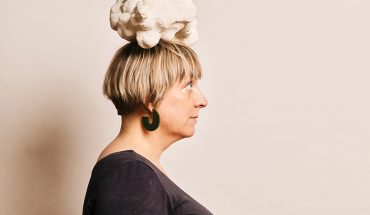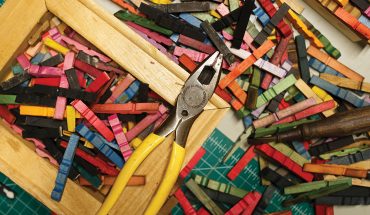The Chapel Hill native creates custom frames for artists all over the Triangle, as well as organizations like the Carolina Hurricanes and The Umstead Hotel and Spa.
by Lori D.R. Wiggins | photography by Terrence Jones
The stark white walls of one large studio at Anchorlight are only occasionally interrupted by spates of color, some of it art, some of it tools. And on any given day, the space is activated with the energy of some of the area’s most well-known creatives — visual artists who have made names for themselves — along with collectors of their art from, in some cases, the world over.
They’re all there for one reason: to see Kenny Batch, a custom framer who lives in Apex, and who’s our local equivalent of a framer to the stars.
Batch is the Carolina Hurricanes’ go-to framer for everything from hockey pucks and jerseys. His footprint paces The Umstead Hotel and Spa in Cary, which has an art gallery that changes seasonally. “My team and I have hung and placed every piece of art you see in that hotel,” Batch says, proudly.
And he’s a friend to the Wake County Public Schools, sharing his expertise with students and teachers. Batch, a native of Chapel Hill, returned to the area after graduating from Fork Union Military Academy in Virginia and earned an undergraduate degree in audio and video production from the University of North Carolina at Chapel Hill in 2001.
While he had his sights set on film school, he now tells stories through the art he frames. “I have a frame shop in the middle of a building with 28 art studios,” Batch says. “I get to see the behind the scenes of all these beautiful things as they get created. These are some seriously talented people and I get to be part of their world.”
Batch and his wife, Kaleah, met as stu- dents at Carolina. They have been married 13 years and have three children, Kenny Allen, 12, Kellen, 10, and Kai, 6. We sat down with him to learn about his career.
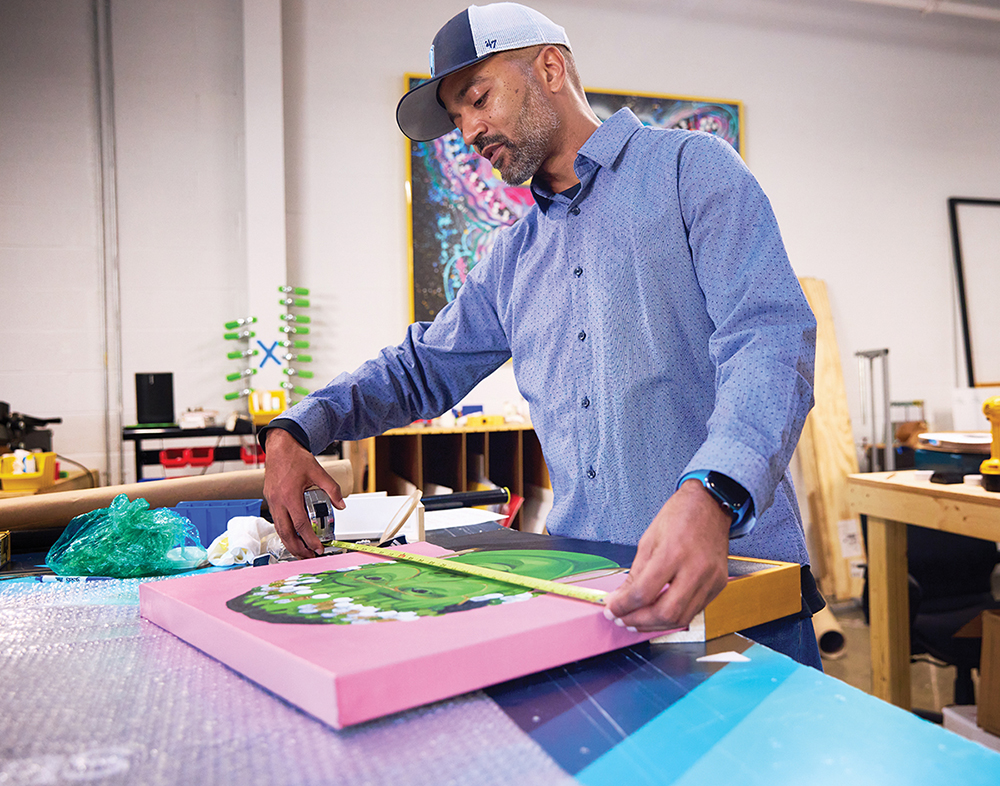
How Did You Become a Framer?
After I finished Carolina, I got a job with a financial management company that had been recently acquired. I was waiting
for that transition to start, but my mom said, “You’ve got to get a job.” Someone told me SAS needed help in its art de- partment, procuring artwork and getting it hung around the SAS campus. I went to work for the department led by Ann Goodnight. The SAS framers taught me how to frame. I was 23. Now, I’ve been a framer and curator for SAS for 23 years. I research and find artwork, then I procure it, frame it and get it hung based on how I want to design the space. My ultimate goal is to maintain the culture of the institute through artwork, pottery and sculpture.
How Did You End Up At Anchorlight?
I was always going there to pick up or deliver artwork. I would meet a lot of the artists there and I really liked the environment. I had been trying to get a spot there for a while when I found out one of the artists left a studio available. Now, I’m right down the hall from a couple of my top clients. It makes me accessible to the art community. The coolest thing about it is the community here is so welcoming; I’m glad to be a part of it. They push me to be the best and excel. There need to be more spaces like Anchorlight and Artspace. What is cultivated in these spaces goes a really long way and helps out a lot of people.
Where Do You Get Your Materials?
I order from all the molding companies and picture frame supply companies, the distributors. But, sometimes, I have to go outside the box and make it myself, or get it made, so I also source materials from local people, too, craftsmen who can create and supply certain things; say, floater frames. I have people I work with and can depend on all over North Carolina; high-end craftsmen like Brandon Watkins, a master welder, and Mike Weiss, a master carpenter. They do excellent work. That allows me to be more custom.
How Do You Choose a Frame?
A lot of it has to do with where it’s going and what the customer actually wants. They come and pick out what- ever they want and I can source it and get it. Sometimes, they haven’t decided what they want and I will provide them options. There’s a smorgasbord of what- ever you want. You can get any color you want, any texture, any luster. I work with 30 different vendors. If they make it, I can get it — I use my designer’s eye and make it all work.
How Do You Prioritize Projects?
I start with art shows because that puts money back into an artist’s pockets, so I will prioritize their needs over someone needing a frame for a piece of art they bought for per- sonal use, to hang on a wall.
What Role Does Art Play in Society?
It’s invaluable. It’s so necessary. It solves so many different problems. It starts conversations that are both comfortable and uncomfortable. It gives people an outlet to be expressive, to release their pain, to release their joy. The emotions that people put into their work, I think, are very important to our world and the people in it. We have to have it.
How Do You Give Back?
Once a year, I sponsor a show for up-and-coming artists who can’t yet afford to pay for their own framing. I also donate a lot of materials, supplies and expertise to art classes at Wake County schools. Once a year, I donate all the supplies for a school classroom project to increase the presentation value of students’ art as gifts to parents; something students can physically take home.
How Do You Choose Art for SAS?
I look online a lot. I look at a lot of galleries. Instagram is good for finding art. Social media in general has opened the doors for anybody to put their stuff out there and there’s some powerful artists out there sharing their talents.
What Has Framing Taught You About Art?
I’ve always loved visual art. One of the coolest things about art is you can see something and it will evoke some kind of emotion, or maybe it won’t. But once you hear the artist talk about it, it opens up a whole new world of amazing. You’ve got to hear the artist’s statement and the artist’s talk. It’s so much more fascinating than just looking at the art in its physical sense alone.
This article originally appeared in the March 2024 issue of WALTER magazine.

